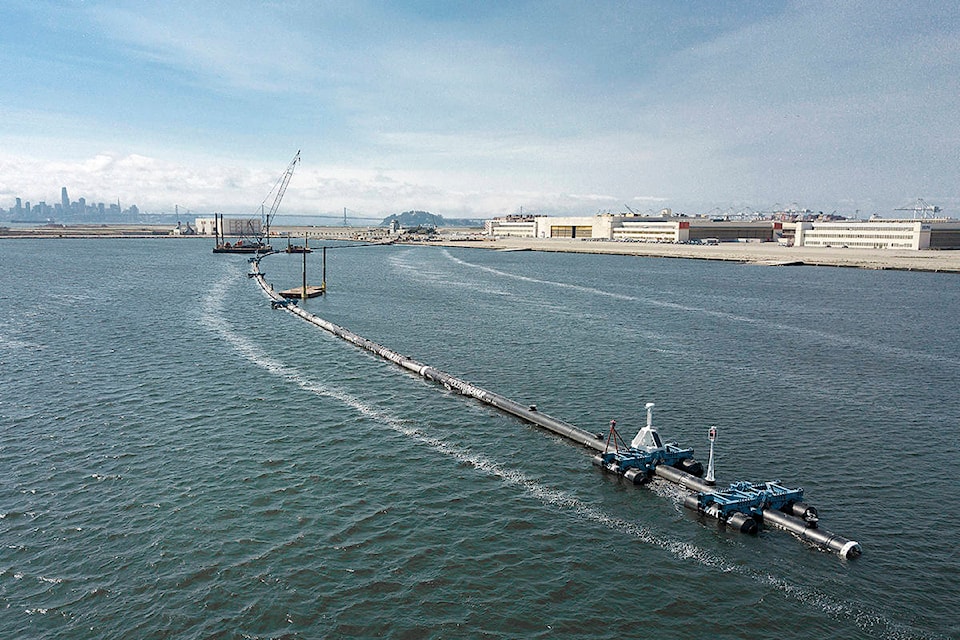The link to forestry is a reference about wood residue being part of the plastic pollution problem. But the main reasons for this article were some comments by Patrick Moore denying the existence of plastic contaminated areas in the oceans and that encouraged me to do some research.
Mr. Moore accused the media, scientists and biologists (and anyone else involved) of faking the news and altering photos for their personal benefit.
His main reason for the accusations was because he could not see any evidence of plastic islands or contaminated beaches using Google Earth Images.
UK scientists have found that plastic debris is much smaller than the smallest features that satellites can detect. Lauren Biermann and her colleagues at the Plymouth Marine Laboratory have found a way around that by combining satellite data with artificial intelligence. They use data from the Sentinel-2A and 2B Earth Observation satellites launched in 2015 and 2017.
These satellites have a spatial resolution of 10 meters, but they can detect multiple wavelengths of light which must be ground checked to identify the various kinds of contaminants. This research is ongoing with one of the test areas in the Gulf Islands in B.C.
Read more: Huge trash-collecting boom in Pacific Ocean breaks apart
The most dramatic pictures of plastic contaminates are usually on remote island beaches and river outlets in densely populated (usually poor) areas which show a continuous layer of a wide variety of plastics. The large contaminated areas in the remote ocean have less dense more scattered plastics and would be best described as a soup like consistency of low density (four particles per cubic meter) along with a variety larger floating (scattered) objects often partially submerged which prevents detection by satellite imagery.
Ocean currents can transport plastics and other contaminants thousands of miles and circular currents (gyres) concentrate the garbage in certain spots. There have been five gyres identified so far in the oceans throughout the world.
One of the best ways to quantify the amount of debris is to drag specially designed nets to trap and measure the contaminates.
A detailed study was done between California and Hawaii part of the Great Pacific Garbage Patch (GPGP) in 2015 where 652 surface net tows were carried out by 19 participating vessels. (Reference below)
In October 2016, the area was revisited by conducting two flights with a Hercules C-130 aircraft that collected aerial imagery. The results were published in 2018 and indicated at least 79 (45–129) thousand tonnes of ocean plastic are floating inside an area of 1.6 million km2. This was four to sixteen times higher than previously reported due to the use of more robust methods to quantify larger debris. Over three-quarters of the GPGP mass was carried by debris larger than five cm and at least 46 per cent was comprised of old fishing nets(ghost nets). Micro-plastics accounted for eight per cent of the total mass but 94 per cent of the estimated 1.8 (1.1–3.6) trillion pieces floating in the area.
Another study was done in 2014 by Charles Moore who discovered the GPGP in 1997. Moore and his team used aerial drones, to assess from above the extent of the trash below. The drones determined that there is 100 times more plastic by weight than previously measured. The team also discovered more permanent plastic features, or islands, some over 15 meters (50 feet) in length.
I suggest another good source about problems with ocean plastics are some videos by Boyan Slat . He was only 16 when he decided to do something about cleaning the oceans plastic contamination as well as reduce the plastics coming from 10 of the worst river sources. I will discuss his interesting story in an future article.
(Reference - Evidence that the Great Pacific Garbage Patch is rapidly accumulating plastic L. Lebreton et. Al Published: 22 March 2018 )
Read more: Canada signs global pact to help rid world’s oceans of abandoned fishing gear
Jim Hilton is a professional agrologist and forester who has lived and worked in the Cariboo Chilcotin for the past 40 years. Now retired, Hilton still volunteers his skills with local community forests organizations.
Do you have a comment about this story? email:
editor@wltribune.com
Like us on Facebook and follow us on Twitter.
